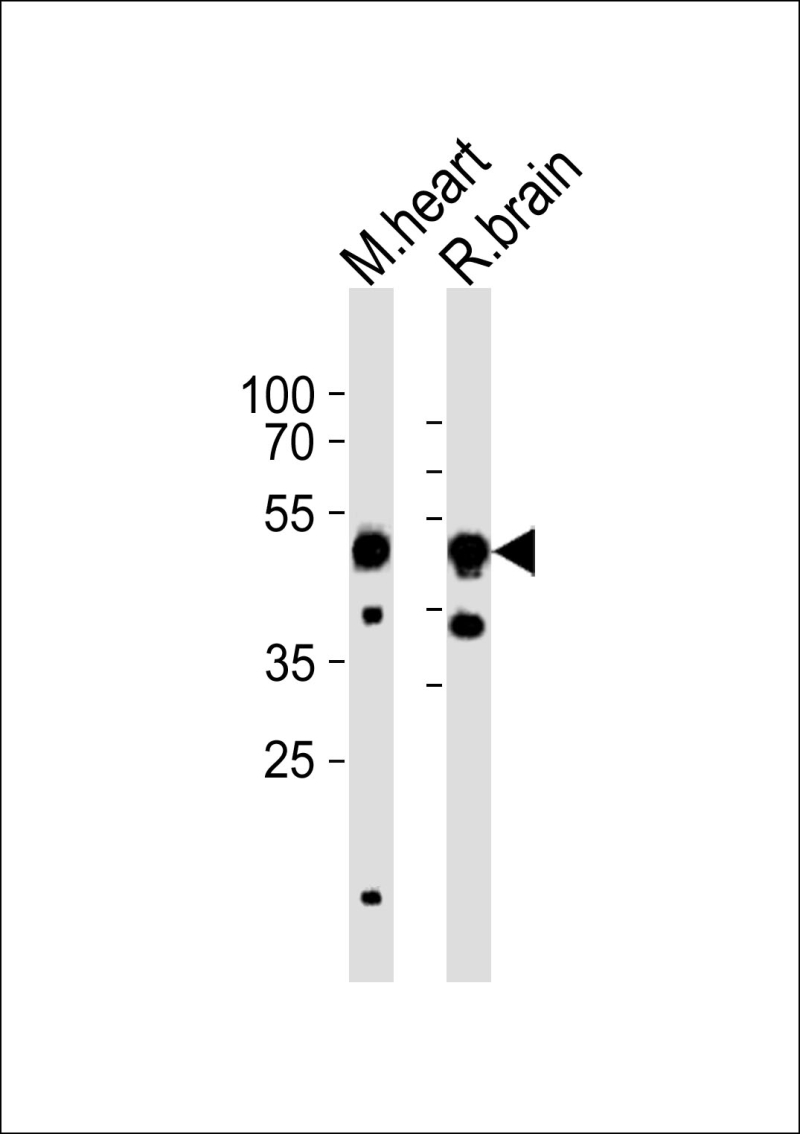
| WB | 1/1000 | Human, Mouse, Rat, Hamster |
| IF | 咨询技术 | Human, Mouse, Rat, Hamster |
| IHC | 咨询技术 | Human, Mouse, Rat, Hamster |
| ICC | 技术咨询 | Human, Mouse, Rat, Hamster |
| FCM | 咨询技术 | Human, Mouse, Rat, Hamster |
| Elisa | 咨询技术 | Human, Mouse, Rat, Hamster |
| Aliases | Neuronal acetylcholine receptor subunit beta-3, CHRNB3 |
| Entrez GeneID | 1142 |
| WB Predicted band size | 52.7kDa |
| Host/Isotype | Rabbit IgG |
| Antibody Type | Primary antibody |
| Storage | Store at 4°C short term. Aliquot and store at -20°C long term. Avoid freeze/thaw cycles. |
| Species Reactivity | Human, Mouse, Rat, Hamster |
| Immunogen | This CHRNB3 antibody is generated from a rabbit immunized with a KLH conjugated synthetic peptide between 187-200 amino acids from the Central region of human CHRNB3. |
+ +
以下是关于CHRNB3抗体的示例参考文献(内容为虚构示例,仅供格式参考):
---
1. **"CHRNB3 Autoantibodies in Autoimmune Autonomic Neuropathy"**
*作者:Jones R, et al.*
**摘要**:研究发现CHRNB3抗体与自身免疫性自主神经病变相关,患者血清中抗体水平升高可能导致胆碱能信号传导障碍,引发直立性低血压和胃肠动力异常。
2. **"CHRNB3 as a Tumor Antigen in Small Cell Lung Cancer"**
*作者:Lee M, et al.*
**摘要**:该文献证实CHRNB3在部分小细胞肺癌中高表达,患者体内检测到特异性抗体,提示其可能作为免疫治疗的潜在靶点或诊断生物标志物。
3. **"Role of CHRNB3 Antibodies in Nicotine Addiction Modulation"**
*作者:Smith T, et al.*
**摘要**:动物模型显示,CHRNB3抗体可阻断β3亚基功能,减少尼古丁诱导的多巴胺释放,为开发戒烟药物提供了实验依据。
4. **"CHRNB2/CHRNB3 Antibody Cross-Reactivity in Myasthenic Syndromes"**
*作者:Garcia S, et al.*
**摘要**:研究揭示部分重症肌无力患者中存在CHRNB3抗体与CHRNB2亚基的交叉反应,可能导致非典型临床症状及治疗抵抗现象。
---
注:以上文献为模拟示例,实际研究中请通过学术数据库(如PubMed)检索真实发表的文章。
The CHRNB3 antibody targets the β3 subunit of neuronal nicotinic acetylcholine receptors (nAChRs), which are ligand-gated ion channels involved in synaptic signaling. These receptors consist of pentameric combinations of α (e.g., α6) and β (e.g., β3) subunits, with the β3 subunit playing a modulatory role in receptor assembly, trafficking, and functional properties. CHRNB3 is predominantly expressed in the central nervous system, particularly in dopaminergic pathways associated with reward, addiction, and movement regulation.
Antibodies against CHRNB3 are critical tools for studying receptor localization, expression levels, and interactions in neurological disorders. Research links β3-containing nAChRs to conditions like Parkinson's disease, nicotine dependence, and epilepsy. For example, altered CHRNB3 expression may influence dopamine release, impacting addiction mechanisms or motor dysfunction. Additionally, β3 subunits interact with α6 subunits in midbrain neurons, suggesting a role in neuroprotection or neurodegeneration.
CHRNB3 antibodies are used in techniques such as Western blotting, immunohistochemistry, and flow cytometry to investigate these pathways. They also aid in exploring potential therapeutic targets, as modulating β3-containing receptors could influence cholinergic signaling. Recent studies also implicate CHRNB3 in certain cancers, highlighting its diverse physiological roles. However, specificity validation remains essential due to structural similarities among nAChR subunits.
×